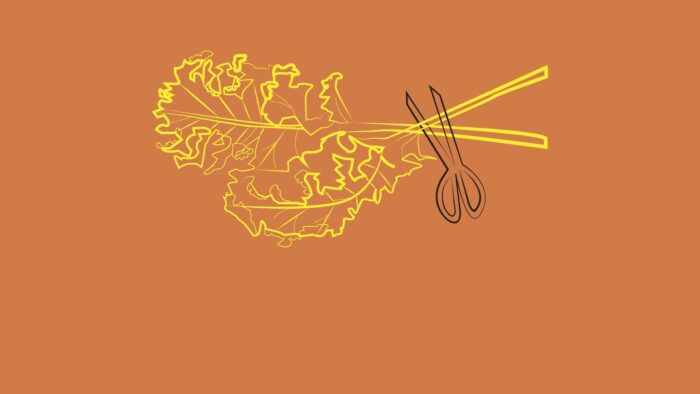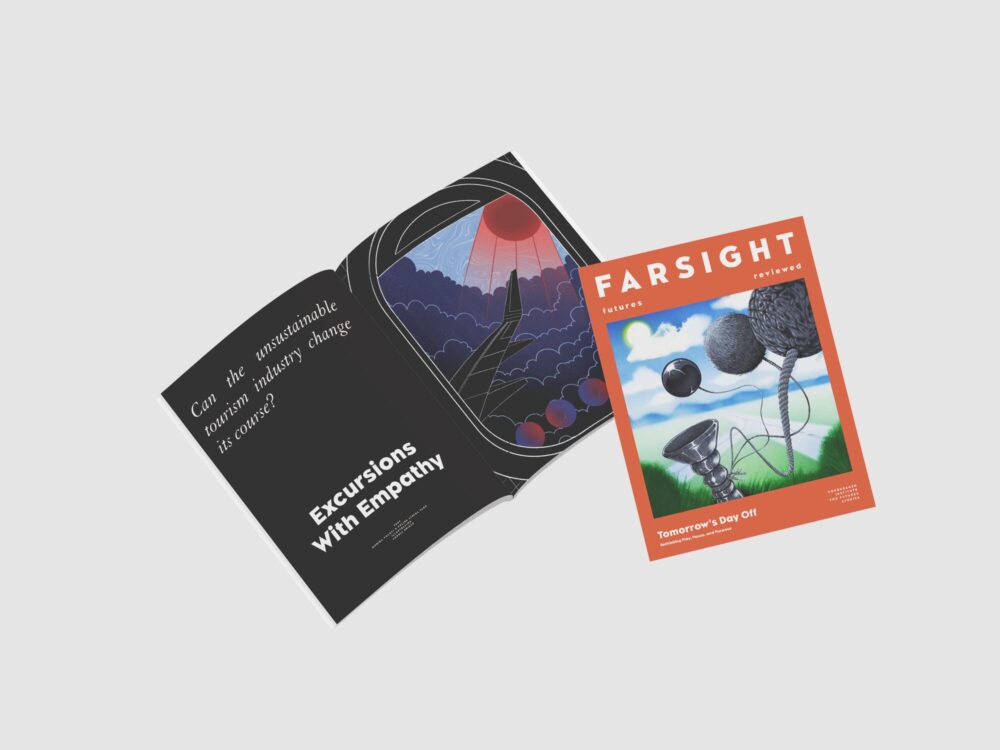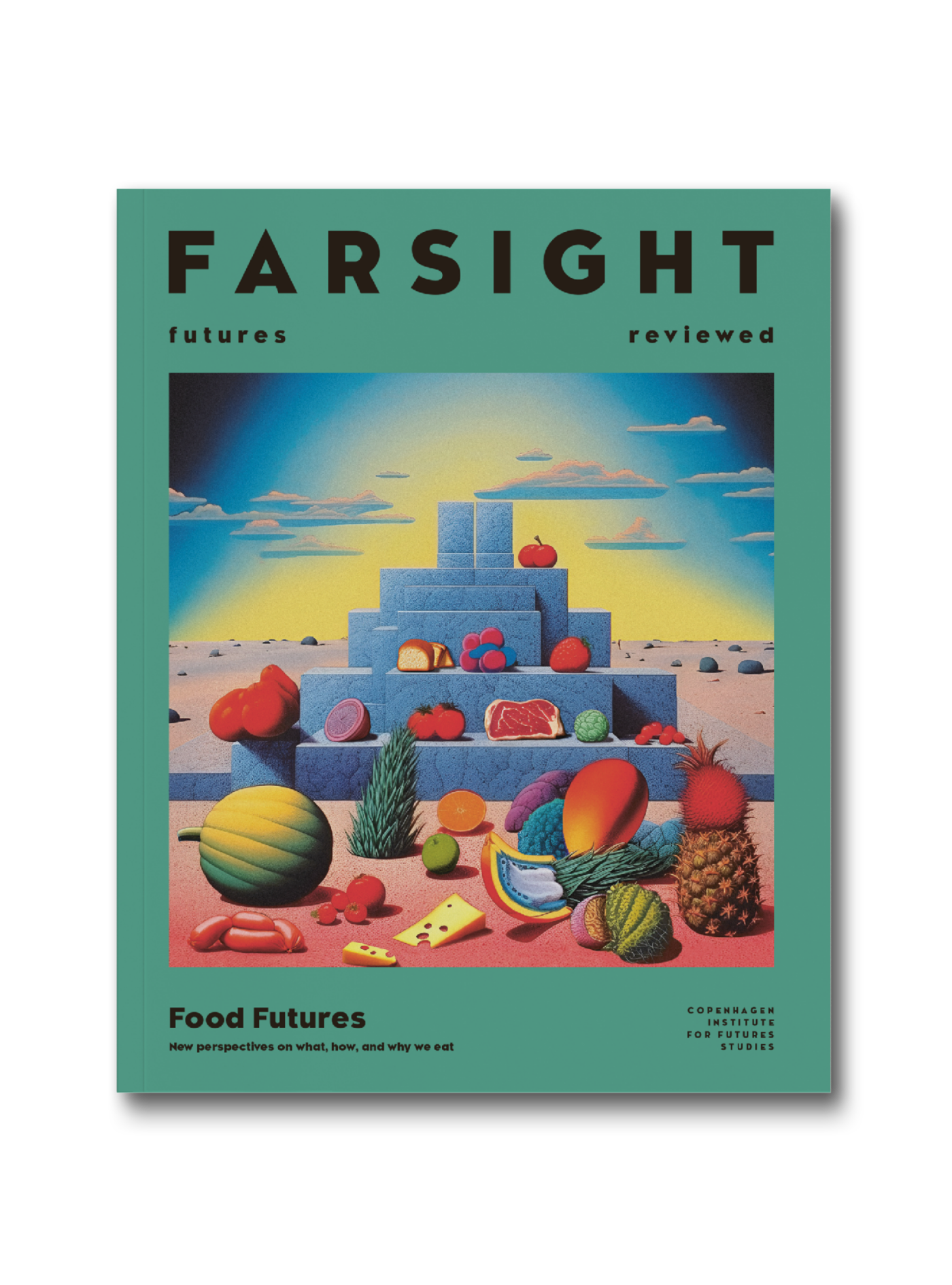
In turn, we use cookies to measure and obtain statistical data about the navigation of the users. You can configure and accept the use of the cookies, and modify your consent options, at any time.

Eske Willerslev is Building a
Genomic Time Machine
The renowned evolutionary biologist explains why the future of food needs to be rooted in the ancient past – and how he and his team are working to make that happen.
Image: Ulrik Jantzen
Famous for his trail blazing scientific explorations, Danish evolutionary biologist Eske Willerslev has garnered widespread acclaim for his contributions to genetics, geology, and archaeology. He was catapulted into scientific stardom by spearheading the historic sequencing of the first ancient human genome and laying the foundation for the field of environmental DNA. Through his work, he has offered fresh interpretations of our ancient past, including the various cross-continent migrations undertaken by our distant ancestors.
The prolific researcher now shifts his gaze from the past to the future. In a new scientific undertaking – perhaps his most ambitious one to date – Willerslev aims to use new techniques to mimic ancient ecologies in order to make crops more fit for a future of climate turmoil and other threats to our food supply. This work, Willerslev hopes, could become part of the solution to the problem of how we can feed a growing global population in the face of growing food insecurity. It’s a momentous challenge. In many parts of the world, warming weather will bring an increase in heatwaves, heavy rainfall, drought, and other bouts of extreme weather. Although genetically uniform crops have historically been a successful shortcut to feeding a rapidly growing world population, a great deal of what we grow today is in no way resilient to these changes, which means that populations across the world risk being pushed into famine and poverty. At the core of these insecurities is a system of food production that’s geared for maximum yield rather than resilience. This is the core issue that Willerslev and his team are trying to address.

Broaden your horizons with a Futures Membership. Stay updated on key trends and developments through receiving quarterly issues of FARSIGHT, live Futures Seminars with futurists, training, and discounts on our courses.
become a futures member“The kind of aggressive selective breeding found in most crops today means that the plants are genetically similar. This exposes them to diseases that they can’t withstand which can lead to smaller, or a complete failure, of the harvests,” Willerslev says. Yet evolutionary history, he explains, can teach us about how to mitigate these risks. Life – whether animals or plants – needs genetic variation to thrive and remain robust in the face of environmental stresses and diseases. And natural selection, it turns out, has produced its own specialisation and climate-resilient crops in the past.
“The climate has shifted multiple times – quite naturally – throughout Earth’s history. When it became warmer, nature adapted. When it became cooler, new changes emerged at the expense of some of those specialised for the hot weather. That’s evolution. You never get precisely the same outcome as you did last time. And we can learn from that.”When a crop is put under pressure, it can adapt in different ways. The plant itself can change its genes. That’s natural selection, the thing that drives evolution.
By adding or subtracting genes, subsequent generations of plants become more resilient to changes in their environment. Plants, and all life for that matter, have adapted to cooling, heating, droughts and wetness, and a range of other climate changes in this way.
Adaptation can also occur in the small ecosystem that surrounds the roots of the plant – its microbiome – which is comprised of microorganisms including bacteria, fungi, worms, and all the other small critters that make the soil their home. Along with the plant’s genetic makeup, the composition of these small ecosystems is of major importance to the well-being and resilience of a crop.
“If you can obtain the information that’s ‘stored’ in a crop and its surroundings, you can learn about the genetic adaptations that have taken place both in the plant’s DNA and in its biome during times of climate change. This can help guide us towards adapting agriculture to future risks,” Willerslev explains. Obtaining this information requires extracting DNA from soil cores, a technique for studying the past which Willerslev himself has helped pioneer.
“We don’t need to go back further than 6,500 years to when we had our last global warming,” Willerslev explains. “The difference between then and now is the pace with which climate change is happening, which gives evolution less time to run its course. The good news is that we have tools and know-how that our ancestors didn’t have. Now we just need to apply them.”
Knowledge of past changes to the climate, as well as the alterations that have occurred in both crops and their associated biomes, is what makes it possible to intervene and make the necessary genetic alterations allowing plants to withstand current and future changes in the climate and other threats. The resulting crop variants, Willerslev explains, will be more resilient than the genetically homogenous ones that dominate agriculture today. Their strength lies in their genetic diversity.
“The variants that can be produced are in a sense more ‘natural’ than what we have now. We’re simply reintroducing variations found in ancient crops as well as their accompanying microorganisms,” he explains.
This can be done using several different techniques, including high-tech gene editing tools like CRISPR, or through ‘precision breeding’, which attempts to mimic how genetic changes could have occurred naturally in the past through more traditional breeding methods.
However, all approaches, Willerslev explains, have been challenged by the fact that research into the microbiomes of crops has so far not received the attention he believes it deserves. As a result, the knowledge of how the surrounding microbiome of past crops may have looked is currently limited – as is the funding that goes into these types of research projects.
“We are challenged by the fact that the ecosystems we are trying to understand are incredibly complex. They are inhabited by millions of species of microorganism and animals. You won’t get far proceeding simply through trial and error because the combinations of species and genes are near endless,” he says. “It’s no use altering genes if you don’t understand how they operate or interact. If you want to add microbes and animals to a system but don’t know what role they serve, it’s essentially a shot in the dark. If you don’t get the desired result you can’t be sure if it’s because you forgot to add the earthworm or something else.”
This is where the study of ancient DNA can lend a helping hand. In many ways, nature has done the experiments for us. That’s not to say that following the guidelines laid out for us in advance is an easy feat, but Willerslev is confident that the goal is within reach. “I would say the toolbox is 90% full,” he says.

Explore the world of tomorrow with handpicked articles by signing up to our monthly newsletter.
sign up hereThe remaining 10%, he explains, lies in bioinformatics, meaning the ability to ‘read’ DNA correctly and understand the relationship between genetic variations in plants and their surrounding environment. This includes identifying which species and organisms are present ‘by accident’ and which ones are integral to the health and resilience of a crop.
“The challenge is threefold,” he summarises. “One aspect has to do with understanding and mapping the historical genetic makeup of plants and figuring out how now-extinct resilient genes can be reintroduced. The second aspect concerns understanding and manipulating the composition of the (potentially millions) of microorganisms in the plant’s environment. The third aspect is to study extreme environments and understanding how past adaptations have responded to these.”
“I think the idea is pretty simple,” Willerslev says jokingly. Indeed, the best ideas typically are. But this kind of genetic wizardry won’t be a quick fix to making plants – and thus our food supply – impervious to a more extreme future, Willerslev stresses. Still, he finds it difficult to understate the potential of the new techniques he is championing.
What about the ethical questions that this kind of science tends to provoke? Does Willerslev expect pushback and concern that his branch of research is pushing us further down the lane of genetic modification, to the point where what we create no longer resembles something ‘natural’?
“I think we’re under so much pressure right now to mitigate the looming food insecurity crisis that such concerns will be invalidated,” he says. “Besides, if we’re talking about precision breeding, what we’re doing isn’t fundamentally different from what humans have been doing for the last 11,000 years, since we first domesticated and started selectively breeding animals.”
“I think, in a way, we owe it to nature,” he says. “It’s us humans who are destroying biodiversity. It’s only fair that we do what we can to restore it.”
“I’ve spent the last 25 years studying the past to understand our present. I want to spend the next 20 years in service of making the future better for our descendants. We do the proof-of-concept and develop the tools. It’s up to others – the politicians, farmers, and the food producers – to use them to their full potential and spread them to all the parts of the world that could benefit.”

This is an article from our issue of FARSIGHT: Food Futures
Grab a copy here